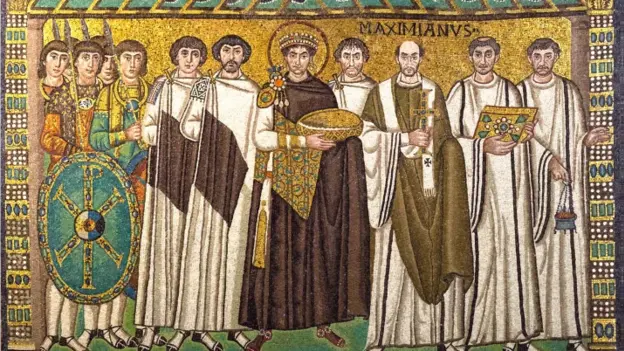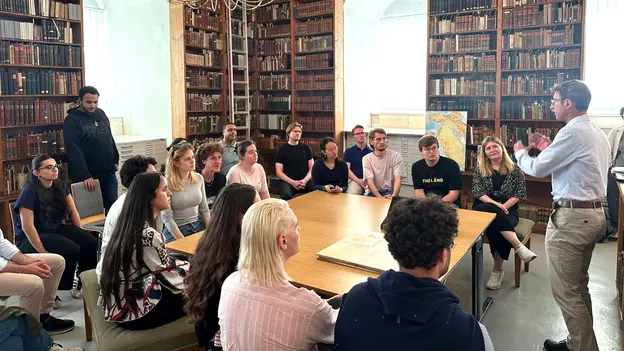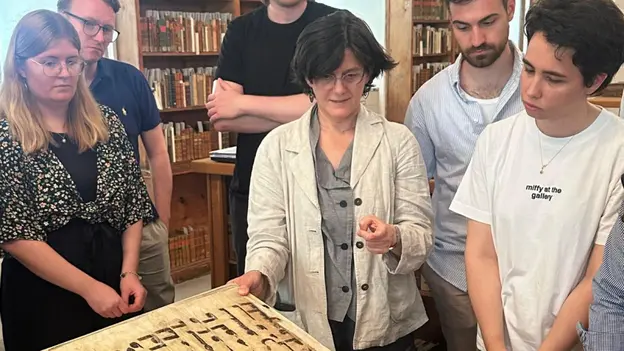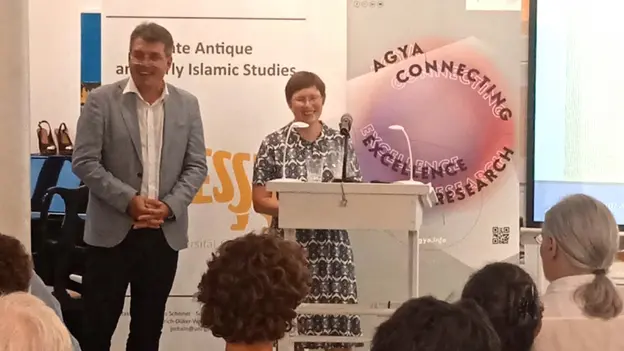Alumni Project
Imagery and Images in Late Antiquity and Early Islam
Summer School
What is imagery (Bildlichkeit) in late antiquity and early Islam? Does identical imagery imply identical attributed content? How do images create an emotional effect? What adaptations and influences of divine image traditions existed in late antiquity and early Islam?
Images and imagery have played a central role in the Middle East and Europe since late antique and early Islamic times – in both religious and political contexts. In the past, images served as media of divine presence or representation of power in Christianity and Hellenism, for example. In Islam and other religious cultures of that era, however, they often took on aniconic forms or became the subject of theological criticism. Despite numerous studies of individual works of art or religious image practices (up to modern times), there is still no comprehensive interdisciplinary examination of image concepts and practices in the field of tension between adaptation, exchange and rejection between Christianity, Islam, Zoroastrianism, Hellenism and Judaism.
A one-week summer school in Göttingen builds on these existing studies by combining interdisciplinary perspectives from the fields of Arabic and Islamic studies, Archaeology, art history, Byzantine studies, history, Iranian studies, Jewish studies, numismatics and Oriental Christianity to analyse images as media of identity, alterity and intercultural dialogue. It examines not only the symbolic but also the social effectiveness of images in different religious cultures.
This AGYA summer school creates a unique space to foster critical interdisciplinary dialogue that challenges conventional narratives and opens new pathways in visual culture and historical research. The most significant challenge is to to establish a shared language of the disciplines involved – when different perspectives meet, the real learning begins.
AGYA alumnus Jens Scheiner, Professor of Islamic Studies, Germany
The summer school leverages the expertise of AGYA Alumni Anis Ben Amor from Tunisia and Jens Scheiner from Germany in the field of late antique and early Islamic imagery, history, and cultural studies. Together with internationally recognized experts and university lecturers, they share their specialized knowledge and extensive research experience in image practices of antiquity, the Byzantine Empire, the Sasanian Empire and early Islamic cultures. This particular combination of these various research perspectives enables an innovative view on imagery as an intercultural phenomenon.
Participating in this exciting interdisciplinary initiative offers a unique opportunity for my academic career, and I especially appreciate the intercultural exchange between students and faculty members from diverse countries, cultures, and academic backgrounds.
Sameh Boukhobza, Student of Applied Languages, Tunisia
The summer school offers an interdisciplinary framework for 20 German, Arab and international students (who are fluent in German language) to learn new methodological approaches, develop cultural-historical expertise and gain a deep understanding of the role of images in interconnected religious and social contexts. The summer school further includes practical elements such as image analyses, excursions to coin and manuscript collections as well as interactive teaching formats to promote a multi-perspective approach to the topic.
One of the most valuable aspects, in my view, is the chance to engage in dialogue shaped by a variety of perspectives, as it allows all participants to learn from one another – regardless of whether you are a university professor or a student. The AGYA summer school broadens my horizons and sparks new impulses across disciplinary boundaries.
Veronika Nagy, Student of Classical Archaeology, Austria
- Disciplines Involved
- Cultural Studies, Islamic Studies, History
- Event Date
- 20-26 July 2025
- Venue
- Georg-August-Universität Göttingen, Germany
- Project Title
- Summer School
- Year
- 2025
- Funding Scheme
- Alumni Project
- Countries Involved
- Germany, Tunisia






